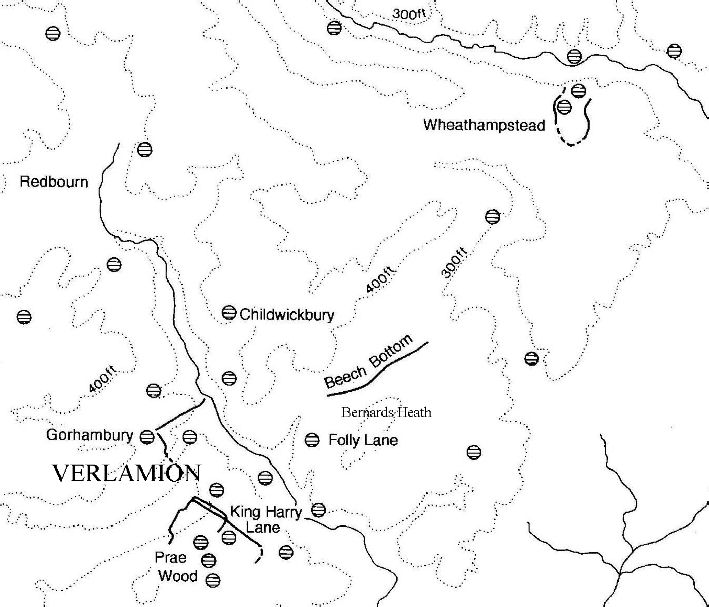
A Short History of Bernards Heath
The Iron Age

Late pre-Roman Iron Age Occupation in the
Verlamion area.
Map from Folly Lane, by Rosalind Niblett, 1999
Bernards Heath occupies the summit of the hill on which the city of St Albans now stands. The hill overlooks the River Ver and while there is some evidence of Stone Age and Bronze Age man in the area, the story of Bernards Heath really starts in the century before the Romans came to the area.
At the time of Julius Caesar's military excursion into South East England the area was occupied by a tribe called the Catuvellauni and it is they who almost certainly built a number of "boundary" ditches in the Chilterns. The largest of these, in terms of earth excavated, is called Beech Bottom. It is over a mile long and in places about 30 feet deep. It forms the northern boundary of the Bernards Heath area, but has never been excavated, so nothing is known for certain about its origin.
In the valley, on the banks of the River Ver, the Iron Age town of Verlamiom grew up, and it is clear from the artefacts found that they traded with the Roman Empire. The Roman writer Strabo records that the imports from England included corn, hunting dogs and slaves. Some of the coins from the area show an ear of wheat, so it is almost certain that wheat was a local commercial crop at the time. There is evidence for a farm at Folly Lane and pollen evidence suggests the area was mainly agricultural - with few woodland trees.
Clearly the imported Roman goods, and the exported wheat, etc., would need to be taken across country to the sea. The Thames valley at the time was extremely marshy and the obvious route would have been over Bernards Heath, towards the Iron Age towns at Wheathampstead and Colchester.
Next: The Roman Period